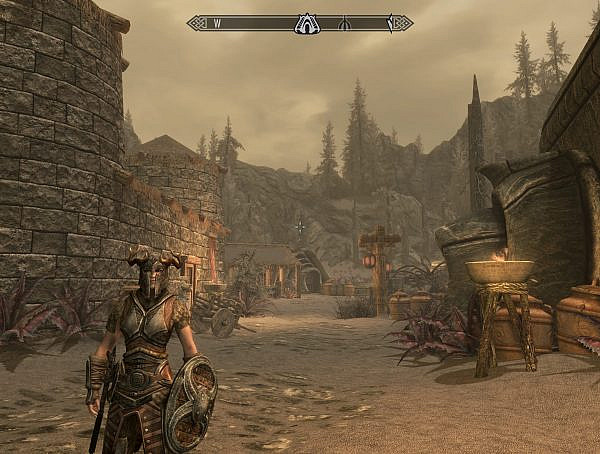About the research
Numair Khan and Anis Ur Rahman’s research is about how mini-maps in games affect spatial learning of players in urban game environment compared to verbally given directions. For the purpose of the research they created an urban game environment using Esri CityEngine software that allows the creation of urban spaces. The city was created using procedural generation; specifically, a 3D modelling method that allowed the designers to create the city using sliders and settings, rather than manually drawing everything. In order to make the 78,75-hectare city interactive, the Unity game engine was used. Distinctive landmarks were placed in the city.
Participants and tasks
Thirty-four participants volunteered for the research and five different tasks were designed for them. The participants were divided into two groups, mini-map group and verbal group. Both groups performed the five tasks, the only difference being the first task where the mini-map group had the help of a forward-up mini-map without cardinal directions as navigational aid, and the verbal group had a compass located at the top of their screen and verbal (text) instructions in the style of “There is a bowling alley south of the church. Go there”.
The first task was to navigate the 14 different landmarks using the help of designated navigational aids. The second was to draw a sketch map by hand. The third was to place the landmarks on a provided map. In the fourth task, participants were shown images from the virtual world and asked if they remembered seeing them—some of the images were not actually in the virtual environment at all. The fifth and final task was identical to the first, but without any navigational aid.
What did they find?
It is important to note that the researchers do not claim that verbal instructions are as efficient as a mini-map: according to other research, a mini-map is a very efficient tool for navigational aid and superior to verbal instructions. However, the goal of the research was to find out if there is a difference between players’ spatial learning when using different navigational aids.
According to the test results, there indeed is a very large difference in spatial learning between players who use a mini-map and players who use verbal navigational aid. Players who use a mini-map have a harder time to locate landmarks without any navigational aid, and players who use verbal directions develop better understanding of where everything is located when navigational aid is taken away from them.
In other words, the problem with mini-maps is that they hinder the players’ ability to learn the environment and landmark positions, while players who use verbal instructions will develop better understanding of the environment in the virtual world.
——————–
Original paper: Numair Khan & Anis Ur Rahman (2018) Rethinking the Mini-Map: A Navigational Aid to Support Spatial Learning in Urban Game Environments, International Journal of Human–Computer Interaction, 34:12, 1135-1147, DOI: 10.1080/10447318.2017.1418804
https://doi.org/10.1080/10447318.2017.1418804
Photo credit: maximilianschiffer
You might also like
More from Game Research Highlights
How do you want to do this? – A look into the therapeutic uses of role-playing games
Can playing RPGs contribute positively to your wellbeing? A recent study aims to find out how RPGs are being used …
Eldritch horrors and tentacles – Defining what “Lovecraftian” is in games
H.P. Lovecrafts legacy lives today in the shared world of Cthulhu Mythos and its iconic monsters. Prema Arasu defines the …
Are Souls Games the Contemporary Myths?
Dom Ford’s Approaching FromSoftware’s Souls Games as Myth reveals the Souls series as a modern mythology where gods fall, desires …















